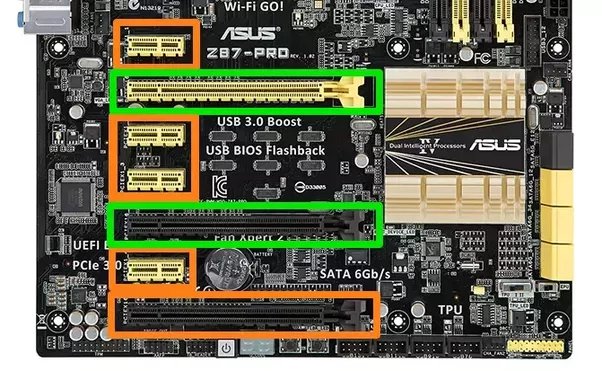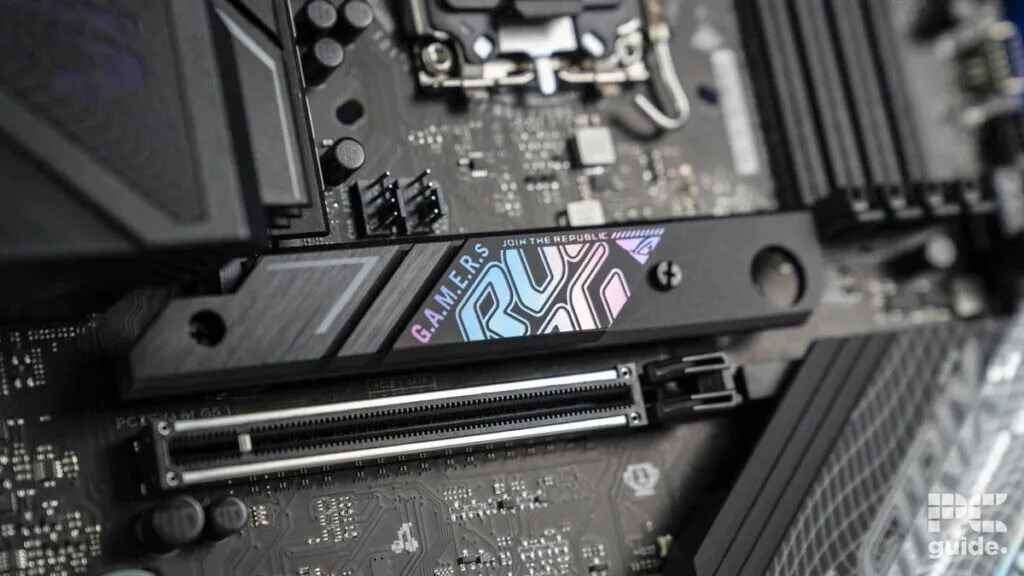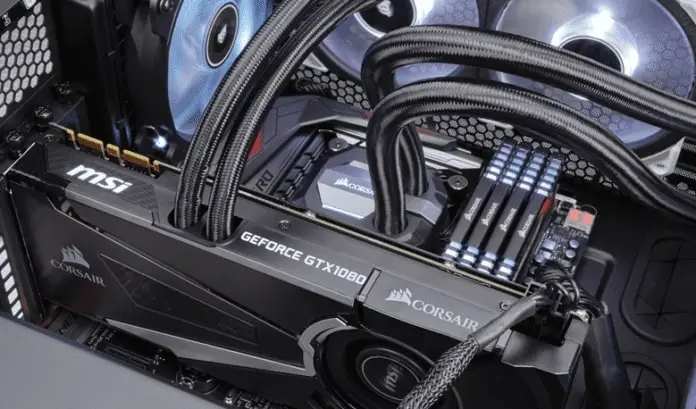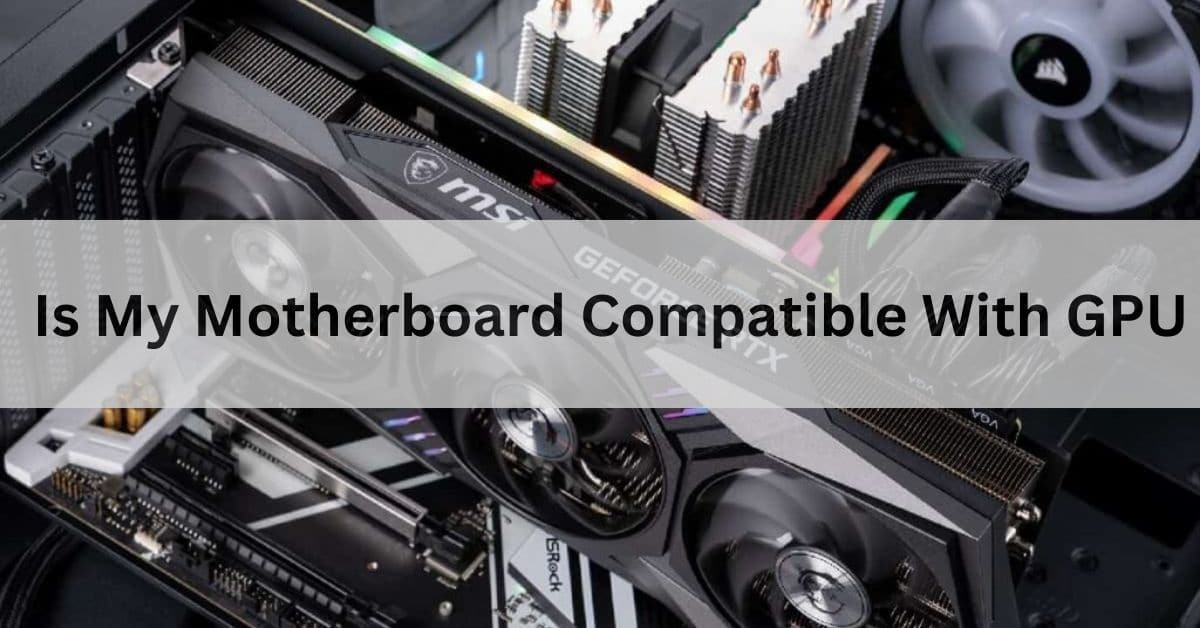Table of Contents
When I upgraded my PC, I wondered, “Is my motherboard compatible with my GPU?” I found it easy to check by looking at the motherboard specs online. This simple step saved me from making a costly mistake and helped my new graphics card work perfectly!
To check if your motherboard is compatible with a GPU, look at the motherboard’s specifications online. Make sure it has the right slots and supports the GPU’s requirements for a smooth upgrade.
In this article, we will discuss “Is My Motherboard Compatible With GPU”.
How to Check Graphics Card Compatibility?

To check graphics card compatibility, look at your motherboard’s specifications. Ensure the PCIe slot matches your GPU. Also, verify your power supply has enough wattage and the right connectors for the graphics card.
Read More: Is Ram Compatible With Any Motherboard – The Ultimate Guide 2024!
How do I know if my motherboard supports a GPU?
Check the motherboard’s manual or website for PCIe slot availability to know if your motherboard supports a GPU. Make sure your power supply can handle the GPU’s requirements, too.
Do all motherboards accept GPU?
Not all motherboards accept GPUs. Some motherboards do not have PCIe slots or may only support integrated graphics. Always check your motherboard’s specifications to see if it can fit a dedicated GPU.
Which GPU is compatible with my motherboard?
To find out which GPU is compatible with your motherboard, check the motherboard’s specifications for PCIe slot type and supported graphics card size. Also, consider the power supply and clearance inside your case.
How do I find a compatible graphics card for my PC?
To find a compatible graphics card for your PC, check your motherboard’s specifications for the correct slot type. Also, consider your power supply and space in your case to ensure a proper fit.
Motherboard/CPU and GPU compatibility?
Motherboard and CPU compatibility with a GPU is essential. Check your motherboard’s PCIe slot and ensure your CPU supports the GPU. This way, you can enjoy better performance without issues.
What GPU can my motherboard support?
To find out what GPU your motherboard can support, check the motherboard’s specifications for the PCIe slot type and size. This will tell you which graphics cards are compatible with your system.
Graphics card and motherboard compatibility?
Compatibility between graphics card and motherboard is important for a working PC. Check the motherboard’s slot type (PCIe) and supported GPU size. Ensure your power supply can support the graphics card for the best performance.
How to Check If a Graphics Card is Compatible?
To check if a graphics card is compatible, look at your motherboard’s PCIe slot type and ensure your power supply can handle the card’s requirements. Also, check if the card’s size fits in your case.
Does my motherboard support this graphic card?
To check if your motherboard supports a graphic card, look for the PCIe slot on your motherboard and compare it with the card’s requirements. You can also check the motherboard manual or manufacturer’s website for details.
Is my motherboard compatible with gpu reddit?
To check if your motherboard is compatible with a GPU, look for its model number online and compare it with the GPU specifications. This ensures they will work well together without any issues.
NVIDIA graphics card compatibility check?
To check NVIDIA graphics card compatibility, look at your motherboard’s specifications. Ensure it has the right PCIe slot and enough power supply. Also, check if your case has enough space for the card.
Is my motherboard compatible with CPU?
To check if your motherboard is compatible with your CPU, look at the motherboard’s socket type and chipset. You can find this information in the motherboard’s manual or online. Make sure both parts match for your computer to work correctly.
Is my motherboard compatible with gpu gaming?

To find out if your motherboard is compatible with a gaming GPU, check the motherboard’s specifications. Look for the PCIe slot needed for the GPU and ensure the power supply can support it. If everything matches, your motherboard should work well with the GPU for gaming.
Read More: Are Asrock Motherboards Good – The Ultimate Guide 2024!
Can a GPU not be compatible with a motherboard?
Yes, a GPU can be incompatible with a motherboard. This may happen if the motherboard lacks the right slot type, such as PCIe. Additionally, older motherboards might not support newer GPUs due to power requirements or size restrictions. Always check compatibility before buying.
What GPUs are compatible with my motherboard?
To find out which GPUs are compatible with your motherboard, check the motherboard’s manual or website for a list of supported graphics cards. Also, look for the PCIe slot type and size. This will help ensure a proper fit and optimal performance.
Is this GPU compatible with my Motherboard?
To check if this GPU is compatible with your motherboard, look at the motherboard’s specifications and the GPU’s requirements. Ensure the motherboard has the right PCIe slot and that your power supply can handle the GPU’s needs. This will help avoid issues when installing.
Are All Graphics Cards Compatible With All Motherboards?
Not all graphics cards work with all motherboards. Compatibility depends on the motherboard’s slot type (like PCIe) and size. Always check your motherboard’s specifications and ensure it can support the graphics card you want to use for the best performance.
Is my GPU compatible with my motherboard?
To check if your GPU is compatible with your motherboard, look for the PCIe slot on the motherboard. Most modern GPUs use a PCIe x16 slot. Also, check the power supply and ensure it has enough wattage to support the GPU.
Is My Motherboard Compatible With GPU?
To check if your motherboard is compatible with your GPU, look for the motherboard’s PCIe slot. Make sure it matches the GPU’s requirements. You can also check the manufacturer’s website for details on compatibility to ensure a smooth installation and good performance.
Compatibility Checks and Upgradability:
Compatibility checks are important when upgrading your PC. Make sure your motherboard supports the new GPU. Check the motherboard’s specifications and the GPU’s requirements. This ensures everything works well together, preventing problems and helping you get the best performance from your system.
Research and Consultation:
To find out if your motherboard is compatible with your GPU, check the motherboard’s specifications. Look for the PCIe slots and supported GPU types. You can also visit the manufacturer’s website for detailed information. This ensures your GPU will work correctly with your motherboard.
BIOS and Driver Updates:
Updating your BIOS and drivers is important for your computer’s performance. These updates can fix bugs, improve compatibility, and add new features. Always check the manufacturer’s website for the latest versions and follow the instructions carefully to avoid any problems during the update process.
How do you tell if a GPU will fit?
To check if a GPU will fit, look at your case size and GPU dimensions. Measure the space inside your case and compare it to the GPU’s length, width, and height. Also, check if your motherboard has the right PCIe slot for the GPU.
Checking Basic Graphics Card Compatibility:
To check if a graphics card is compatible with your motherboard, look at the PCIe slot type on your motherboard and the card. Also, check the power supply requirements and size. This ensures your new card fits and works well with your system.
How to Test Motherboard Compatibility with a New Graphics Card?

To test if your motherboard is compatible with a new graphics card, check the motherboard’s specifications for PCIe slot type and version. Also, ensure that your power supply has enough wattage and the right connectors for the graphics card. Finally, confirm the card fits in your case.
Read More: How Long Does A Motherboard Last – Here’s What You Need To Know!
How do I know which graphics cards are compatible with my motherboard?
To find out which graphics cards work with your motherboard, check your motherboard’s specifications online. Look for the PCIe slot type and size. Then, compare it to the requirements of the graphics card you want. This way, you can ensure they are compatible.
FAQs:
1. How do I know if my motherboard supports a GPU?
To find out if your motherboard supports a GPU, check the manual or website for PCIe slot availability. Ensure your power supply can also handle the GPU’s power needs.
2. Do all motherboards accept GPUs?
No, not all motherboards accept GPUs. Some may only support integrated graphics or lack the necessary PCIe slots. Always check your motherboard’s specifications first.
3. Which GPU is compatible with my motherboard?
To find a compatible GPU, check your motherboard’s specifications for the PCIe slot type and size. Also, consider your power supply and physical space in your case.
4. Can a GPU not be compatible with a motherboard?
Yes, a GPU can be incompatible with a motherboard if it lacks the right slot or if it requires more power than the motherboard can provide. Always check compatibility before buying.
5. How can I check NVIDIA graphics card compatibility?
To check NVIDIA graphics card compatibility, look at your motherboard’s specifications. Ensure it has the right PCIe slot and enough power supply. Also, confirm there is enough space in your case for the card.
6. Is my GPU compatible with my motherboard?
To determine if your GPU is compatible, check for the PCIe slot on the motherboard. Most modern GPUs use a PCIe x16 slot. Also, make sure your power supply has enough wattage for the GPU.
Conclusion:
Ensuring your motherboard is compatible with your GPU is crucial for a successful upgrade. Check the motherboard’s specifications for the right PCIe slot and confirm your power supply can meet the GPU’s needs. This helps avoid problems and improves performance.
